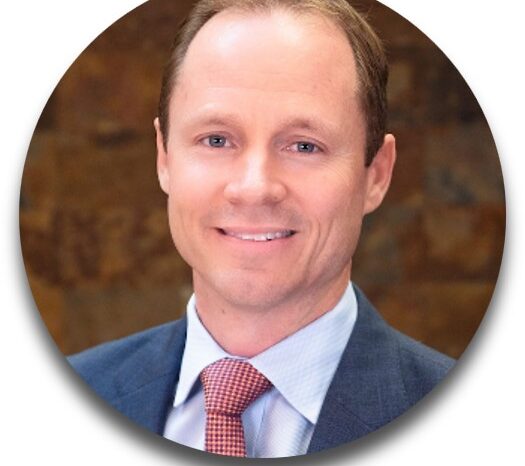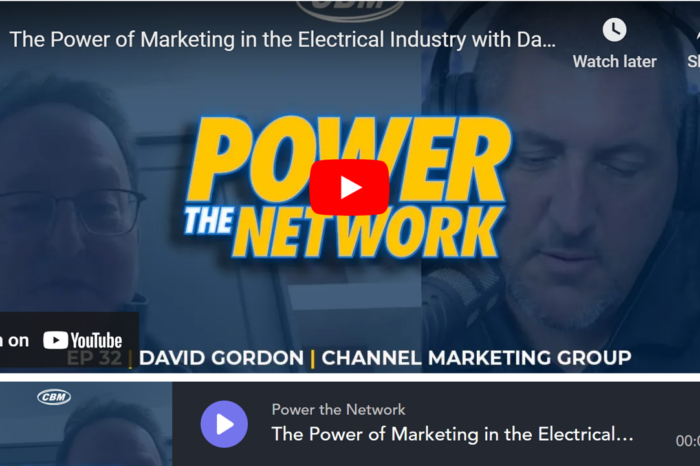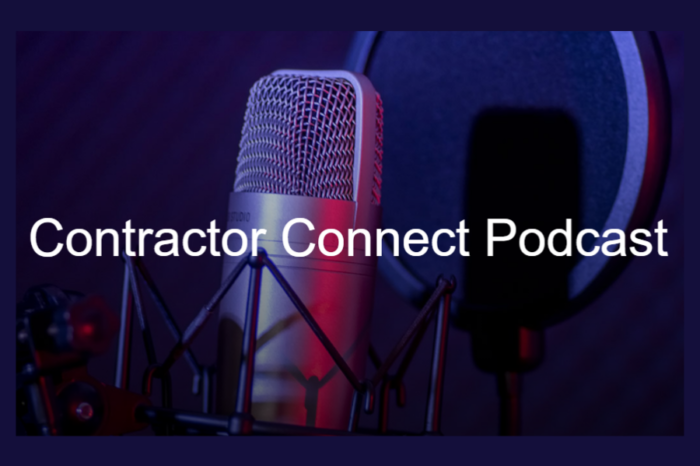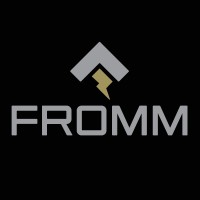Getting Heard. Podcasts Deliver Thought Leadership

Two of the biggest marketing trends over the past year have been the increased usage of video and the launching of podcasts. The reason – a desire to share more content and capture attention.
Video usage has skyrocketed as it becomes the new “face to face” (F2F) medium and it is a means to highlight product application.
Podcasts are a means to share thought leadership either by communicating insights in a number of areas and/or highlighting the range of experts that you are acquainted with. It can capture attention for 10 to 30 minutes (and sometimes longer.
Within the electrical industry many are acquainted with the Electrical Economy podcasts from Jim Lucy at Electrical Wholesaling or Scott Costa’s DistribuTED series or perhaps Jason Bader’s Distribution Talk series (where David Gordon, Channel Marketing Group, was interviewed)
Distributors such as EECO and McNaughton-McKay also use podcasts effectively.
Industrial Sage is another unique platform that combines video and podcasting. This is a platform where manufacturers, and presumably others, do a video interview. Acuity has been active on this platform. It is focused on the industrial end-user audience. Here’s a link to their recent interview with Gary Trott, Acuity’s VP of Technology Commercialization on Ultraviolet Disinfection Technology as part of their Bright Ideas series
While the concept is “simple” … either talk about a topic or interview someone, dedicating the time to a podcast, generating the listenership and having the perseverance for longevity can be challenging.
Few have mastered the art of conducting podcasts like Ben Baker, President of Your Brand Marketing. In fact, he developed a business out of it and offers to help companies develop podcast series. He can also help strategize on increasing visibility as well as “socializing / populating” on the various podcast platforms. In the article below, he shares some of the process. For clients he helps maximize the marketing output … the wide variety of marketing content that can be extracted from a podcast that helps justify the time commitment by generating “legs” to your content.
Ben shares some of his insights regarding podcasting.
Podcasting – What People Don’t Tell You
We all want to differentiate ourselves in a crowded marketplace. We want to rise above the noise and enable our customers to understand our actual value to them. We do this to create opportunities for more meaningful conversations, client engagement, and profits.
The challenge is, this is getting harder and harder to do in a digital world (let alone a world of COVID where sales organizations continue to struggle with generating face-to-face opportunities and/or connecting with customers on non-customer service issues).
You’ve done the digital marketing bit, lot’s of emails. You’ve co-branded with your manufacturers / distributors. You’ve offered Zoom training and considered online tradeshows.
If you’re a manufacturer, you’ve done the features and benefits training and know that your audience is suffering from Zoom fatigue. Keeping their attention for more than 15 minutes is a challenge. You know customers want to hear how product actually works. They why behind it. They success stories that generated results for others. You know you need to reach customers differently as they are deleting your emails. And if you want to reach the engineering community, you know that audience seeks ideas and thought leadership.
So, the question is, what is next? As a manufacturer or distributor of electrical products, how do you compete in a world where you need to shine?
You must tell a story that enables people to see how you help them, solves their problems, creates value, and don’t focus on price—focusing on price brands you as another low-cost, low-value commodity that is easily replaced and soon forgotten.
Conversely, if people trust you and see that you provide them not only with a product but with service and knowledge, you have immediately separated yourself from the crowd.
Podcasts are a fantastic way of doing this. They build trust and understanding of your brand’s value by creating a catalogue of valuable content directly to your audience.
Podcasts enable sales because you are not trying to sell anything through the podcast. You provide them with information that they cannot get elsewhere, on an on-going basis, that is relevant to them and helps them solve problems. The show is never about a product or service, but about trends, insights, new inventions, and processes coming into the market and introducing your audience to your partners who can also solve their issues in partnership with you.
So, how do you start a podcast?
The first thing you need to determine is who the audience is you want to influence and the pain points they have that you can provide insights on? Most podcasts fail within ten episodes because people do not do this. They do not have a strategy about what they will talk about for the first three to six months, and they have not taken the time to line up guests who can support their podcast objectives.
Subscribers are another thing you need to consider. How do I get the people to subscribe and listen to the podcast? The simple answer is to include the podcast as part of a newsletter that people can sign up for and make sure it is prominently displayed on your website, email signatures, and other communication. However, for people to subscribe, you need to make sure you are doing one thing, and that thing is continually listening to your audience. Are they finding what you are saying relevant? Do they have a way to tell you and get feedback? Do they have ways to share materials easily and promote your podcast through their social media channels? All of this is critical for success.
The third thing you want to be thinking about (in tandem with strategy and subscribers) is ROI. What is my objective for having this podcast? I use my podcast to invite potential clients and influencers onto my show so that they can hopefully become clients or introduce me to clients while other people use it strictly for brand awareness. Setting up goals for the podcast is critical for it to succeed.
The last thing you need to be thinking about is distribution. Remember, the podcast itself is just one medium generated from the podcast. You can create graphics that support the podcast message, audiogram files, articles, and short videos, all from the video and audio recordings. The more you can repurpose that information and make it easily shareable, the more valuable it will become for you.
Here is wishing everyone health, safety, and long-term success.
Connect with Ben to find out how he can help you develop a communications strategy that enables you to stop being perceived as a commodity and start being a brand worth loving.
Next Steps
If developing a podcast is part of your 2021 plan as a means to increase thought leadership or it’s something you’ve thought about, I suggest having a call with Ben to learn more.
If you need help conceptualizing content direction, give us a call.
And if you do develop a podcasts, do research in advance to identify the various platforms to post to (and consider talking to people at EECO, McNaughton-McKay, TED and Electrical Wholesaling, or other) to inquire about best practices. Monetizing content takes time.
But, be forewarned, generating subscribers takes time and you need something worthwhile to say to generate “word of mouth” interest and keep people coming back.























